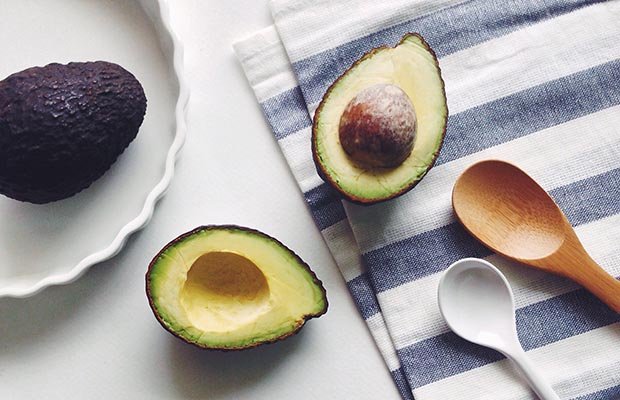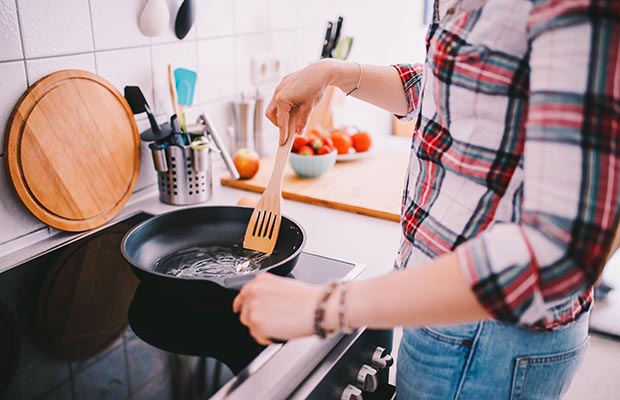
Photo: Twenty20
Come January, it’s out with the old and in with the new. And for many of us, that includes habits that are (literally) weighing us down.
If you’ve resolved to cut out the processed junk and nix unhealthy convenience foods, welcome to the world of clean eating. While the term can mean something slightly different depending on whom you ask (and which social media feeds you follow), the general rule of thumb is to say “yes” to whole foods and “no” to foods with binders, preservatives, added colors and/or chemicals.
To help you navigate the do’s and don’ts of eating clean, we turned off Instagram (vegan fat bombs and majik smoothie bowls be damned!) and tuned in to what nutrition experts had to say.
RELATED: Your 4-Week Meal Prep Guide to Start Eating Clean
Clean Eating Mistakes (And Easy Fixes)
1. You’re thinking “diet” instead of “lifestyle.”
Clean eating received negative press in 2017 from people concerned that it was promoting extreme ideals or unfairly casting some foods as “unclean.” Not so, say the nutritionists we spoke with. “Eating clean to me is just another way to describe putting a focus on consuming whole foods,” says Caitlyn Elf, RD and blogger at CaitsPlate.com. “Don’t think of it as a ‘diet’ or a restrictive plan, but rather fueling your body with what it needs in order to perform all its (many!) tasks optimally.” In terms of whole ingredients, focus on lean proteins, eggs, nuts, seeds, fruits, vegetables, brown rice, ancient grains and quinoa.
RELATED: 7 Days of Clean Eating, Made Simple
2. You’re letting Instagram be your nutritionist.
When it comes to eating clean, fads shouldn’t have a seat at the table. “In the world of Instagram, ‘clean eating’ has come to mean eating only organic or vegan or gluten-free,” says Ashley Mooney, RDN and Clinical Dietitian for Morrison Healthcare at Yale New Haven Hospital. “Just because something has the term ‘organic’ or ‘vegan’ on it does not necessarily mean it is the healthy choice.” Taylor Johnson, RDN, LDN, and founder and CEO of Roots Reboot, couldn’t agree more. “People are tending to go for the ‘gluten-free’ or ‘vegan’ labeled products because these are ‘healthy’ buzz words right now. Unfortunately, neither of these labels mean it’s a nutrient-dense and/or a minimally processed product.”
3. You’re limiting whole food groups.
This is where trends can really do damage. From going gluten-free for non-medical reasons to consuming coconut oil with everything you cook — extreme eating is never a good thing. “I think people lose the forest through the trees, giving so much attention to the details of whether a particular choice is ‘acceptable’ that they forget about the big picture,” says Mark Sisson, author of The Keto Reset Diet and founder of Primal Kitchen. “They approach nutrition from a defensive position — ‘Can I eat this item or not?’ — when they should be asking, ‘What do I want my nutrition to look like today?’ If we’re constantly working from a reactive stance, we can end up eating 20 ‘acceptably clean’ choices in a day that add up to very little nutrition,” Sisson says.

Photo: Twenty20
4. You’re counting calories.
Let’s be clear: Calories do matter. However, instead of focusing on your overall tally for the day, pay attention to the quality of the calories you consume. “Counting calories and being overly restrictive are just not realistic,” says Johnson. “Also, [it] doesn’t always work. There are plenty of high-calorie foods that are healthy and nutrient dense.” So while that 100-calorie snack pack might help with portion control, it’s not necessarily a diet fix. “It is more important to make sure your snacks are packed with nutrients like protein and fiber,” Mooney explains, “rather than worry about keeping them under a certain number of calories.”
RELATED: Is Weight Loss Really As Simple As Calories In, Calories Out?
5. You’re eating granola, energy bars or protein bars.
If there’s a common enemy among health professionals, it’s whole grains masquerading as health food. This includes granola, energy bars, protein bars and trail mix. “I think there’s a big misconception when it comes to energy bars,” Elf says. “Some can contain more sugar than a candy bar.” She recommends reaching for products made with ingredients you can pronounce, with no more than 10 ingredients overall. Her picks: KIND Fruit Nut Bars and Lärabars.
6. You’re overestimating your needs.
Regardless of how healthy a food may be, it’s still a matter of calories in and calories out. “My clients commonly sabotage their diets when it comes to overestimating how many calories they burned in their workout,” Johnson says. The biggest culprit? What you’re drinking — especially large smoothies and energy drinks. (And, ahem, these fast food calorie bombs.) “I’d also point out how I see folks overdo the ‘healthy fats’ concept,” Sisson says. “They read that butter or ghee is OK again, or that they should be eating more of these nuts or this oil, but they don’t bring perspective to it,” he says. “The result? Each day they end up with 500 extra calories they didn’t need.”
Read More
Everything You Need to Know About the Top Diet Plans
50 Resources to Help You Lose Weight (the Healthy Way)
30-Minute Meals for Quick, Healthy Dinner Ideas







































